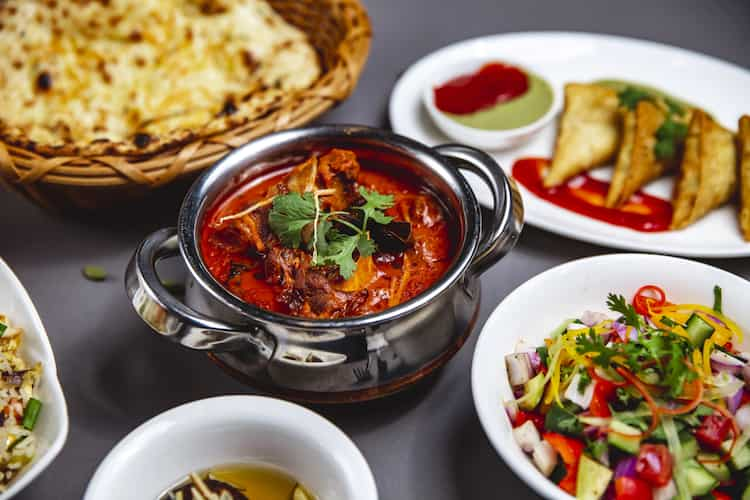The North Indian city of Patna, which is the capital of the prestigious state Bihar, is well-known for both its historical significance as well as its extensive and varied culinary tradition. The food in Patna is an interesting fusion of regional tastes, cultural inspirations, extraordinary spice flavours, and international influences. The city's culinary landscape conveys a tale of trade routes, colonial history, and the blending of many culinary cultures, creating a fascinating and enlightening culinary journey.
Historical Tapestry of Flavours
The city of Patna holds a notable place in the Indian History. It has faced several rulers, invaders, colonies, and global visits. The city has witnessed the rise and fall of empires, the movement of merchants, and the exchange of ideas as a melting pot of cultures and civilizations.

It is home to rich and remarkable cultures derived from several other Indian states and emperors. Its culinary customs also exhibit this historical tapestry. From the Mauryan and Gupta empires through colonial times, Patna's food has been influenced by a wide range of cultures.
Global Influences on Local Plates
Patna has been a trade location for a very long time in the history. Due to its location along the old trade routes, Patna's food has been influenced by various cultures around the world.
These routes, which connected the Indian subcontinent to Central Asia, Europe, and Southeast Asia centuries ago, made it possible for the flow of both goods and culinary customs. In particular, spices were crucial to these discussions. The British colonial influence in India added to the international flavour mash up in a special way.
Patna's culinary scene boasts several dishes that have been influenced by global flavors:
Colonial Footprints on Bihari Cuisine
Indian food has been forever influenced by the British colonial era, and Patna's gastronomic scene is no exception. The way that residents prepared and consumed food was changed by the introduction of ingredients like potatoes, tomatoes, and carrots. The British influence is still felt in Patna's food today, particularly in the form of curries and stews.
Litti Chokha: Litti Chokha has surely made itself globally renowned by now. This traditional dish consists of stuffed wheat flour balls (Litti) that are served with a variety of mashed vegetables (Chokha). Due to ancient trading routes, a combination of domestic and foreign influences can be seen in the usage of spices and cooking methods.
Khaja: This sweet pastry, which resembles Middle Eastern baklava, is made of layers of dough that have been dipped in sugar syrup. Given that its name is derived from the Arabic word "Khajur," Patna's dessert selections clearly reflect a global influence.
Pua: Made of wheat flour, milk, and jaggery, Pua is a sweet that resembles crepes. The way it is made recalls the changes of the colonial era, including British-introduced ingredients like milk and sugar.
Spices: The Heartbeat of Patna's Food Culture
The core of Patna's culinary crosswords is spices. They are the foundation of its flavours and have woven the culinary identity of the city. These spices, which range from flavorful cumin and coriander to smoky red chilies and acrid mustard seeds, are expertly blended to produce mouthwatering dishes.
Sattu Paratha: A frequent breakfast in Patna, Sattu Paratha has a stuffing made of spiced, roasted gram flour. This recipe's use of roasted gram flour is homage to traditional trade routes and the use of unusual products.
Sabzi Navratan: "Sabzi Navratan" is a vegetarian curry dish that means "nine gems." It is a dish from the Mughal Period and specifically from the reign of Emperor Akbar. With the use of luxuriant ingredients like paneer, dried fruits, and nuts, it reflects the Mughal influence on Patna's food culture.

The Prestigious Mughal Influence on Patna’s Food Culture
The Mughal Reign also contributed in the diversity of cultures and dishes in Bihar. They left an array of dishes, flavours, and varieties for people to savour on.
Bihari Kebabs: Bihari Kebabs are tender meat skewers that combine regional spices and cooking methods from Central Asia. They are a tempting blend of melting-in-the-mouth meat and numerous flavourful spices. They have been influenced by the Mughal culinary history.
Bhakri: Bhakri is thick bread made of wheat that resembles Middle Eastern flatbreads like pita. Its simplicity and adaptability show how Patna's food culture has incorporated a variety of bread-making methods from throughout the world.
Patna Biryani: Just like Hyderabadi, Lucknow, and Kolkata Biryani which have extremely distinct vegetables and flavours, the Patna Biryani is also a regional variation on the traditional biryani that combines aromatic rice cooked with tasty spices and marinated meat to highlight the Mughal influence on regional flavours.
Pantua: This delicious delight is comparable to the well-known gulab jamun dessert in India. Its preparation and presentation show how Middle Eastern and Indian dessert techniques interact.
Dahi Chura: Made from beaten rice and yoghurt, this traditional morning meal is evocative of other yogurt-based dishes from around the world, demonstrating the adaptability of dairy products in many culinary traditions.
Preserving the Tradition
Although Patna's food culture has had many inspirations from throughout the world, it's crucial to remember that these influences have been effortlessly incorporated into the regional culinary tradition. The authenticity of the cuisine is maintained by the continued transmission of traditional cooking methods and recipes through the generations. The city's culinary scene is proof that accepting international influences doesn't have to entail sacrificing cultural roots.
These dishes however demonstrate how Patna's food culture has been influenced by regional and international influences, whether as a result of historical trade routes, colonial relations, or cross-border sharing of culinary techniques. Each dish provides a special mix of flavours that are a monument to the city's rich culinary tradition and tells a tale of cultural mingling.


